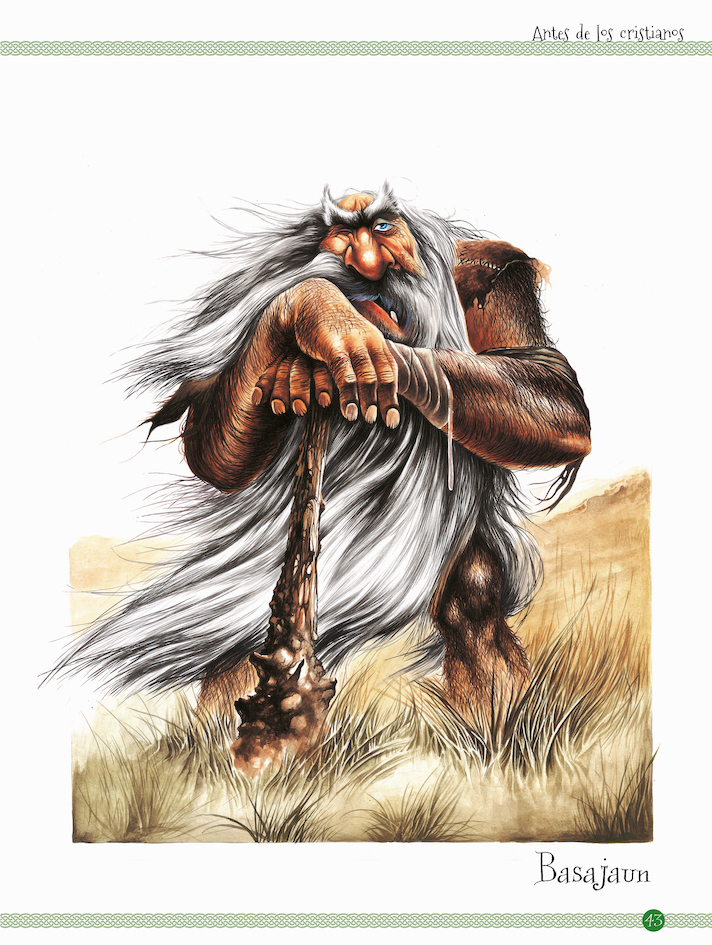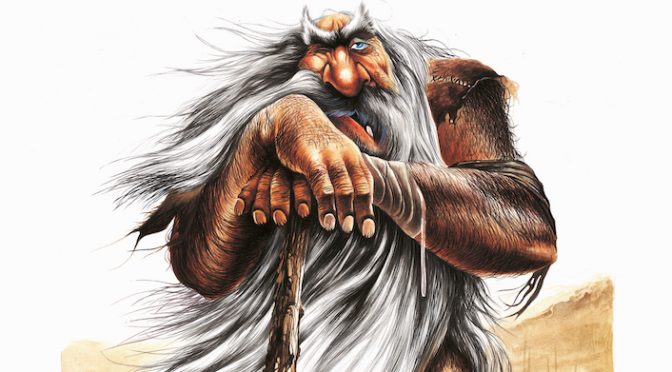Basque mythology is full of colorful characters and beings. With the dense forests that cover the imposing mountains rising from the sea, it should come as no surprise that the mythology features beings that dwell in those forest and are closely connected to nature. However, the Basajaunak — the wild lords of the forest — are a paradox wrapped in an enigma. While they are wild beings that almost embody the primal nature of the forest, they are also protectors of humans, especially shepherds. They are also repositories of knowledge, that humans have tricked to learn new technologies.

- In one story, a group of four cowherds were watching their flock in Esterenzubi, on the border between France and Spain. When they slept, they would leave a ration of their food for Antxo, the local Basajaun, who would come and warm himself by their fire as they slept. One day, only the youngest left any food out for him and so Antxo, after eating his share and warming his body, took the clothes of the other cowherds. It snowed heavily that night and, upon waking, the three cowherds were dismayed to find their clothes missing. They begged the young boy to go find them, finally offering him a lame heifer as a reward. He found Antxo, who after some coaxing returned the clothes, but also gave the young man a hazelnut wand, telling the boy to hit the heifer one hundred and one times. The boy did, and the heifer eventually produced for him a herd of one hundred and one beautiful animals.
- The Basajaun is covered in hair that falls to his knees, covering his chest and belly. He protects flocks from wolves and oncoming storms, announcing their imminence by shouting in the mountains. The character of the Basajaun sits on the border between nature and civilization. He is of nature, living in the forests, but he protects the shepherd from the worst that nature has to offer.
- The Basajaun is a complex character, an amalgamation of many stories that have combined to create the being we know today. At least three main motifs coexist in the Basajaun:
- The wild Basajaun, covered with hair, agile and vigorous, capable of running faster than wild beasts, wandering naked in winter or summer, never getting sick and feeding on forest animals and plants.
- The shepherd, who helps human shepherds and collects their offerings (bread, milk, and warmth) in exchange for his help.
- The victim of robberies perpetrated by malicious heroes such as San Martín Txiki or Haxerihargaitz; this last version is the owner of valuable riches or secrets.
- Because of this synthesis of many stories over centuries, the character of the Basajaun is often contradictory. In some stories, he is a protector, defending the shepherds and flock from wolves and storms, in exchange for a small offering. In others, he steals from the shepherds and scares the sheep. In some, he is impervious to the elements, his hairy body protected from the cold, but in others he warms himself by the shepherds’ fire.
- There are of course similarities and maybe even common origins with other beings in European mythology. There are beings that roam the Alps and the Apennines that teach humans important knowledge. And the Greek and Romans had deities such as Silvanus and Pan protected herds and promotes their fertility. However, any direct associations are, of course, lost to time.
Primary source: Hartsuaga Uranga, Juan Inazio. Basajaun. Enciclopedia Auñamendi, 2021. Available at: http://aunamendi.eusko-ikaskuntza.eus/es/basajaun/ar-11720/
Discover more from Buber's Basque Page
Subscribe to get the latest posts sent to your email.



One thought on “Basque Fact of the Week: The Basajaunak, the Wild Lords of the Forest”